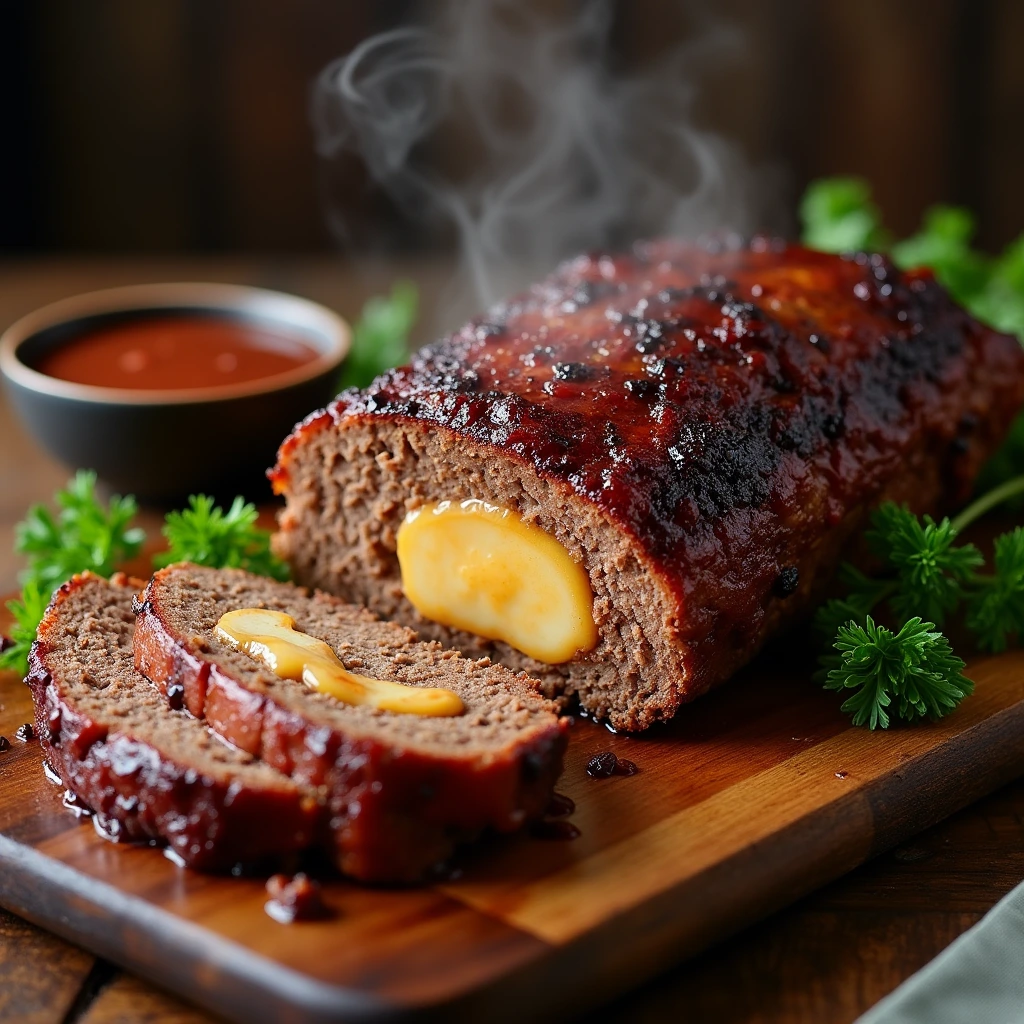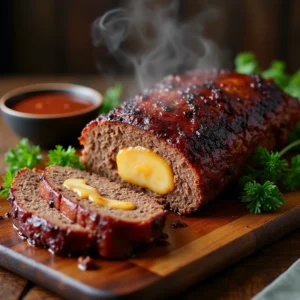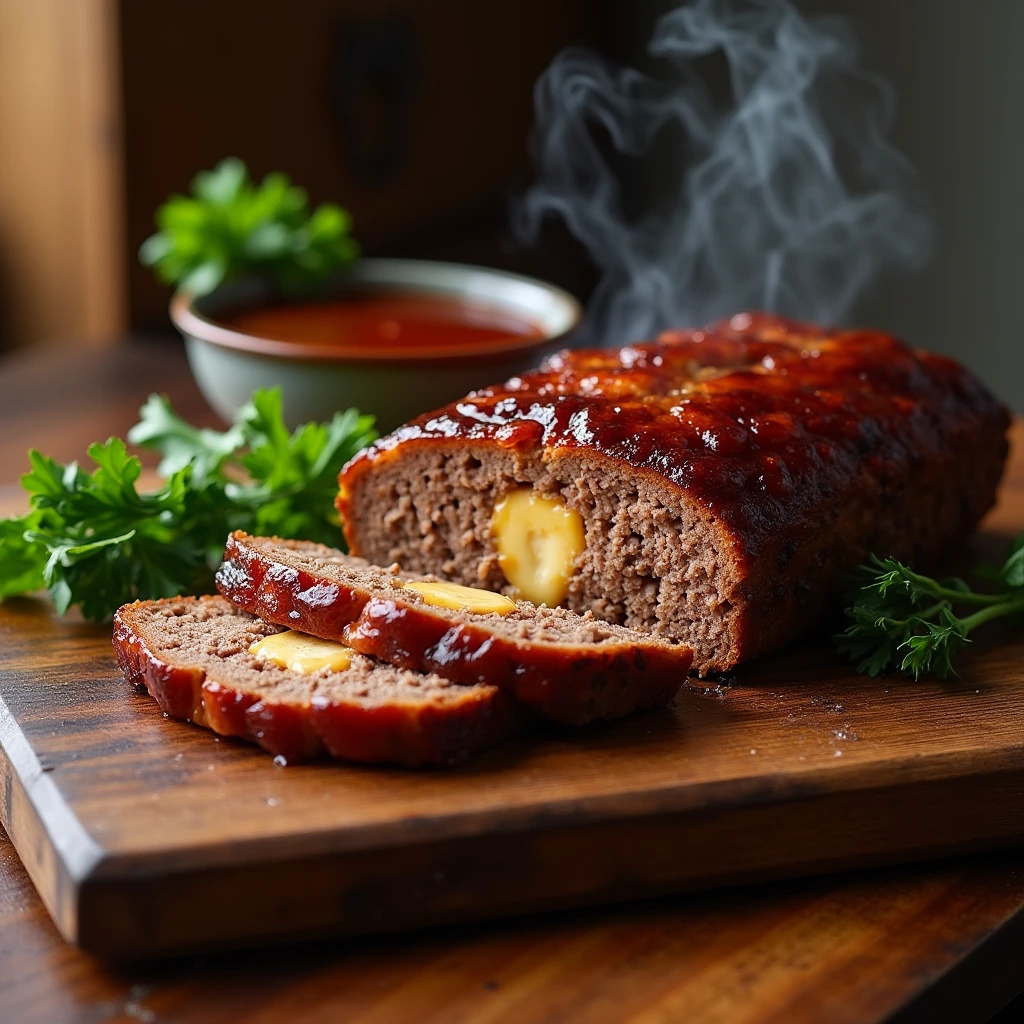If you’re a fan of comfort food and the smoky aroma of outdoor grilling, you’re going to love this smoked meatloaf recipe. Think of it as a bar b q meatloaf with extra depth—thanks to the slow-smoking process that gives it a crusty bark on the outside and a juicy, tender middle. Whether you’re a weekend grillmaster or just learning the ropes of using a smoked sausage smoker, this recipe will take your meatloaf game to a whole new level.

We’ll walk you through everything: ingredients, step-by-step smoking instructions, pro tips, and the best ways to serve and store it. Plus, if you’ve been smoking deer sausage, we’ll show you how to work that flavor right into this dish.
Ingredients You’ll Need
Here’s what you’ll need to make a classic smoked meatloaf:
- 2 lbs ground beef (80/20 works best)
- 1 cup breadcrumbs or crushed Ritz crackers
- 2 eggs
- 1 small onion, finely chopped
- 2 garlic cloves, minced
- 1 tbsp Worcestershire sauce
- 1/3 cup milk
- 1 tbsp BBQ seasoning or rub
- Salt and pepper to taste
Optional flavor boosts:
- Jalapeños or bell peppers
- Shredded cheddar
- Chopped parsley
For the glaze:
- 1/2 cup ketchup
- 2 tbsp brown sugar
- 2 tbsp BBQ sauce (you could try Carolina Gold BBQ Sauce for a tangy twist)
Want to get adventurous? Swap in some venison or a pork blend from your last batch of smoking deer sausage to add complexity and moisture.
Equipment Checklist
You don’t need a fancy setup, just a few essentials:
- A smoked sausage smoker, pellet grill, or any smoker you have on hand
- Hickory, cherry, or mesquite wood chips (see this smoking wood guide)
- Meat thermometer (a must!)
- Foil tray or wire rack
- Aluminum foil (for tenting if needed)
How to Make Smoked Meatloaf
- Preheat Your Smoker
Set your smoker to 225°F. If you’re using a pellet grill or smoked sausage smoker, make sure the heat is steady and you’ve selected a wood that matches your flavor profile. Hickory and cherry are great go-to choices.
- Mix the Meat
Combine your ingredients in a large mixing bowl. Use your hands or a fork to gently fold everything together. Don’t overmix—it can lead to a dense loaf.
- Shape It
Form your meat into a loaf shape by hand and place it on a foil-lined tray or rack. Want to get fancy? Wrap the loaf in bacon or stuff it with cheese.
- Smoke It
Place the tray in your smoker and let it go for about 2.5 to 3 hours, or until the internal temp reaches 160°F (check with a USDA meat thermometer guide).
- Glaze & Finish
About 30 minutes before it’s done, brush the loaf with your glaze mixture. This gives the outside a sticky-sweet coating that complements the smoky flavor.
- Rest & Slice
Remove the meatloaf and let it rest for 10 minutes. This locks in juices and makes slicing easier.
Expert Tips for Next-Level Meatloaf
- Mix up your meats. Try a beef and pork combo, or use ground venison from your smoking deer sausage stash.
- Add a pan of water to your smoker for moisture control.
- Want an extra crispy crust? Try a quick reverse sear by raising the heat to 400°F for the last 10 minutes.
- Need more smoked inspiration? Try these smoked boneless chicken thighs—they pair great with the meatloaf for a BBQ platter.
Perfect Pairings
Your smoked meatloaf is the star, but the right side dishes will make the meal unforgettable. Here are some favorites:
- Garlic mashed potatoes
- Smoked mac and cheese
- Grilled corn on the cob
- Jalapeño cornbread
- Green beans with bacon
Want something low-carb? Try a burger bowl recipe as a fun alternative.
FAQs: Smoked Meatloaf Questions, Answered
It usually takes between 2.5 and 3 hours at 225°F. Always go by internal temperature, not time. The safe zone is 160°F for ground meat.
Cowboy meatloaf is a bolder version of classic meatloaf. It often includes chopped jalapeños, corn, cheddar cheese, and sometimes crushed BBQ chips for a crunchy topping. It’s usually smoked or grilled for added flavor.
Glaze the meatloaf during the last 25–30 minutes of smoking. This lets the sauce caramelize without burning, creating a sticky, flavorful crust.
Yes, like large cuts of meat, meatloaf can hit a temperature “stall” around 150–155°F where the temp holds steady for a while. Just be patient—it will rise again. Don’t crank up the heat or you risk drying it out.
Wrap-Up
Smoking meatloaf transforms a classic comfort food into a BBQ masterpiece. With crispy edges, tender meat, and a glaze that caramelizes just right, this smoked meatloaf recipe is perfect for weekend gatherings or dinner any night of the week.
You can customize it with your favorite spices, mix-ins like cheese or bacon, or even venison from your last smoking deer sausage session. Whether you’re using a top-tier pellet grill or an old-school smoked sausage smoker, this recipe delivers every time.
Try it out, and don’t forget to experiment—maybe with a side of Carolina Gold BBQ sauce or some smoked boneless chicken thighs for a full-on BBQ feast.
Happy smoking!

Smoked Meatloaf
Equipment
- Smoker or pellet grill
- Wood chips (hickory or cherry)
- Meat Thermometer
- Foil tray or wire rack
- Aluminum foil
Ingredients
Meatloaf Base
- 2 lbs ground beef 80/20 blend recommended
- 1 cup breadcrumbs or crushed Ritz crackers
- 2 eggs
- 1 small onion finely chopped
- 2 cloves garlic minced
- 1 tbsp Worcestershire sauce
- 1/3 cup milk
- 1 tbsp BBQ seasoning or rub
- salt and pepper to taste
Glaze
- 1/2 cup ketchup
- 2 tbsp brown sugar
- 2 tbsp BBQ sauce
Instructions
- Preheat smoker to 225°F (107°C). Use hickory or cherry wood chips for best flavor.
- Combine meatloaf ingredients in a large bowl and mix gently to combine.
- Shape mixture into a loaf and place on a foil-lined tray or rack.
- Smoke for 2.5 to 3 hours or until internal temperature reaches 160°F (71°C).
- Mix glaze ingredients and brush on loaf during the last 30 minutes of smoking.
- Remove from smoker and let rest for 10 minutes before slicing.

